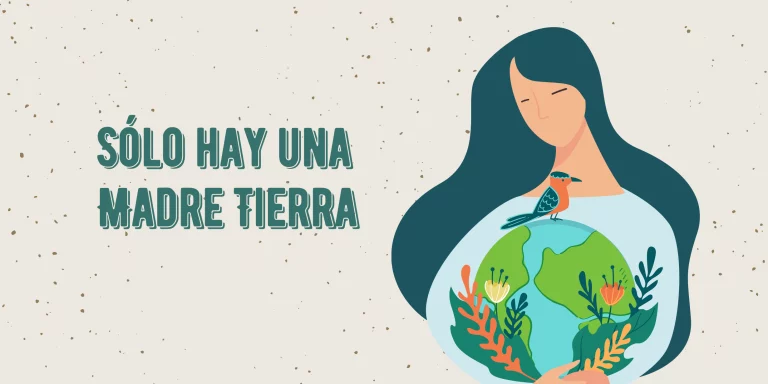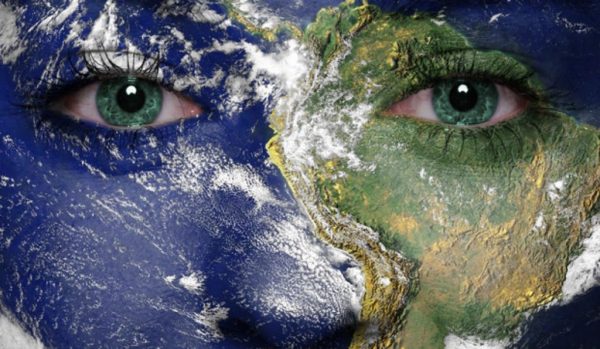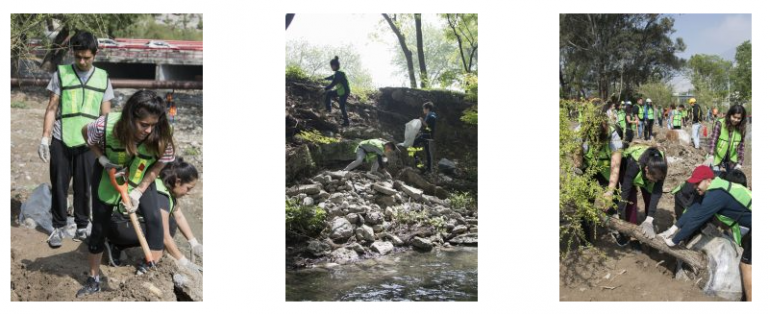
UNIVERSIDAD AUTÓNOMA DE NUEVO LEÓN
SECRETARÍA DE SUSTENTABILIDAD
There is only one mother earth

Known as Abya Yala, Pachamama, Tonantzin, Mother Earth, Mother Earth is recognized as a living being, which is characterized by being a unique, indivisible and self-regulated community of interrelated beings, which sustains, contains and reproduces the beings it They live in it. It is called "Mother Earth" because during the Paleolithic they made reference to a higher power that gave life and on the other hand also as an analogy to our mother, because without her we would not have life, much less a future, so we must protect her. maintain it and provide affection; idea that has its origin in the American people and that has come to be established in the United Nations in Resolution 63/278 of the General Assembly where it expresses that Mother Earth is a common concept to talk about planet Earth.

According to the Universal Declaration of the Rights of Mother Earth, it and those who live on it have a series of rights, among which are: to life, to exist, to be respected, to continue with their vital processes free of human alterations, maintaining its identity and integrity, water, clean air, comprehensive health, free of contamination, not to be genetically altered and a full restoration.
In this context there are also a series of obligations of human beings with Mother Earth, some of them are:
- Learn, analyze, interpret and communicate about how to live in harmony with Mother Earth.
- We must ensure that in the search for human well-being we contribute to the well-being of Mother Earth in the present and future.
- Establish and apply rules and laws for their protection.
- Respect and restore the cycles, processes and balances of the earth.
- Empower people to defend the rights of Mother Earth, as well as those who live on it.
- Prevent human activities from leading to the extinction of species, destruction of ecosystems or alteration of ecological cycles.
- Guarantee peace.
- Respect Mother Earth, as well as the diverse cultures, traditions and customs of the people who live there.
- Promote economic systems that are in harmony with Mother Earth.

Do you put any of them into practice?... probably yes, otherwise it is time to act and carry out actions that allow us to change the way in which we relate to our planet and consequently with those who share it, an idea that leads us to return to what the Uruguayan writer Eduardo Galeano mentions that the Earth is sacred in the sense that everything we can do against it turns against us. Currently, we have a sick Mother Earth in which there is air pollution, climate change, environmental noise, contaminated water, pandemics, among others; and according to the Aquae foundation, one in four deaths is related to environmental destruction.
On the other hand, the United Nations Environment Program (2021) calls for making peace with nature, where it describes that some transformations to nature have endangered human well-being, for example, despite that the economy has grown like never before in the history of humanity, in the world there continues to be hunger and poverty, on the other hand, the growth of the world population, today more than 7 billion people, has tripled the use of resources: from this perspective the capacity of the earth to sustain life, provide resources and absorb waste is increasingly less.
On the other hand, the Earth continues to be kind and gives us the opportunity to transform our relationship with nature in such a way that by implementing sustainable economic systems, practicing healthy lives, reducing greenhouse emissions, recycling waste, among others. ; They allow us to reduce poverty in the world, promote health, peace, and the construction of sustainable cities, among others.

Due to the importance of this issue, it was in 2009 that the United Nations General Assembly established April 22 as International Mother Earth Day, with the aim of building a healthy and sustainable environment, to address to various problems such as climate change, environmental pollution, deforestation, among others; but primarily protect planet Earth so that future generations can enjoy the ecosystems and natural resources it offers us.
Man definitely has a direct influence on the well-being of planet Earth and more and more actions are being carried out for its conservation and recovery; However, consumption and production habits have not been entirely sustainable, generating a negative impact to the point of seeing nature as a commodity; in such a way that this is where our present choice of what we have with respect to the future we want lies.
And what actions do you take to take care of Mother Earth?

References:
Comisión Nacional de Derechos Humanos. (2016). Día Internacional de la Madre Tierra. Disponible en: https://www.cndh.org.mx/noticia/dia-internacional-de-la-madre-tierra
Conferencia Mundial de los Pueblos sobre el Cambio Climático y los Derechos de la Madre Tierra. (2012). Declaración Universal de los Derechos de la Madre Tierra. Disponible en: http://rio20.net/propuestas/declaracion-universal-de-los-derechos-de-la-madre-tierra/#:~:text=La%20Madre%20Tierra%20y%20todos,humanos%2C%20o%20cualquier%20otro%20estatus.
Fundación Aquae. (Sin información). Cuidar el medio ambiente es cuidar nuestra salud. Disponible en: https://www.fundacionaquae.org/medio-ambiente-salud/
Naciones Unidas. (Sin información). Harmony with Nature. Disponible en: http://www.harmonywithnatureun.org/
Programa de las Naciones Unidas para el Desarrollo. (2016). Madre Tierra, proveedora de vida y bienestar. Disponible en: https://www.gt.undp.org/content/guatemala/es/home/ourperspective/ourperspectivearticles/2016/04/18/madre-tierra-proveedora-de-vida-y-bienestar.html
Programa de las Naciones Unidas para el Medio Ambiente. (2021). Hacer las paces con la naturaleza. Disponible en: https://wedocs.unep.org/xmlui/bitstream/handle/20.500.11822/34949/MPN_ESSP.pdf
Wemus, D. (2002). ¡Tierra Madre! Por el renacimiento indígena. Ecuador: Producciones digitales Abya-Yala. Disponible en: https://digitalrepository.unm.edu/cgi/viewcontent.cgi?referer=&httpsredir=1&article=1482&context=abya_yala